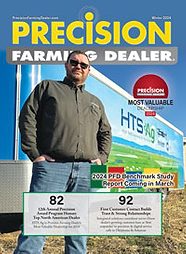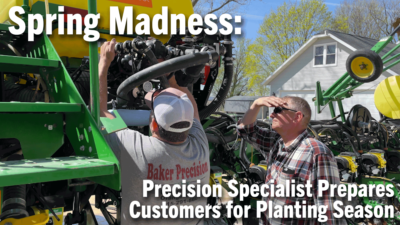Having recently returned from Michelin’s international media event in Europe, I had the opportunity to get an intimate look at the tire company’s production, testing and inspection processes.
One of the most interesting elements of the trip was a detailed tour of Michelin’s factory in Valladolid, Spain, where the company produces about 50,000 tractor tires per year. Not surprisingly, the vast majority of production is automated, with machines primarily handling the mixing, assembly and curing of agricultural and consumer tires.
Employees were relatively scarce on the factory floor, other than forklift operators shuttling rubber — in various stages — from one work station to another. It wasn’t until we arrived at the inspection area where the purring and buzzing of the assembly equipment dissipated and gave way to more audible forms of human communication.
One of the points emphasized by Michelin officials is that every single tire that leaves the factory is visually inspected by a trained employee, in addition to an ultrasound and x-ray examination for “nonconformities.” It takes 3 months working with an experienced inspector and then another 3 months working alone to be certified at the plant.
The level of training that goes into spotting often minute tire defects got me thinking about how precision farming specialists refine their problem-solving skills in the field. Diagnosing technology problems isn’t an exact science, and I’ve seen specialists take creative approaches to troubleshooting, when an automated analysis doesn’t reveal a solution.
As one precision specialist told me a while back, “Sometimes, you have to go with your instinct and trust yourself to make the right decision.” Most precision specialists aren’t afraid to experiment and the good ones learn from their mistakes to improve the quality of service they provide to customers.
Over time, experienced specialists develop an increasingly trained eye and can efficiently diagnose a problem before they ever connect their computer to a display in the cab.
One of the last stops on the Michelin factory tour was to the “prison” where a handful of tires with minor defects are quarantined each day after testing. Sitting in the corner was one of the company’s large tractor tires, which had two patches of rough tread, no more than an inch in size, which had been spotted by an inspector.
Perhaps the defects would have been caught during the technical evaluation, but I was nevertheless impressed with the inspector’s ability to identify the problem. Knowing what to look for is an advantage not always afforded precision specialists, but being able to visualize and execute a solution, is what keeps customers coming back.







Post a comment
Report Abusive Comment